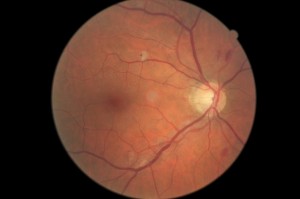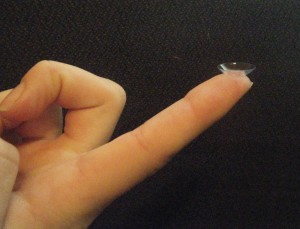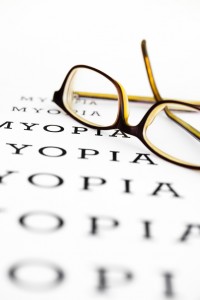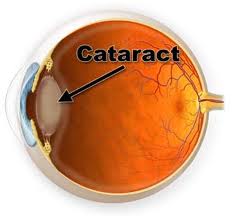November is Diabetes Awareness month. High amounts of blood sugar can harm the internal structures of the eye. Below are some of the things that diabetes can do to the eyes.
- Blurry or Double Vision. Fluctuating blood sugar and fluctuating vision are connected. A change in glucose levels affects the eye’s ability to maintain sharp focus. It may take several months after your blood sugar is well controlled for your vision to stabilize.
- Diabetic Retinopathy. The leading cause of diabetes-related vision loss is diabetic
 retinopathy. This condition damages the network of blood vessels supplying the retina with blood and oxygen. It also causes abnormal growth of blood vessels on the retina. When these vessels leak they damage the retina causing permanent vision loss.
retinopathy. This condition damages the network of blood vessels supplying the retina with blood and oxygen. It also causes abnormal growth of blood vessels on the retina. When these vessels leak they damage the retina causing permanent vision loss. - (the picture on the left is an example of fluid and blood leakage in diabetic retinopathy.)
- Cataracts. People with diabetes have a much greater risk of developing cataracts and at an earlier age. A cataract is clouding of the eye’s natural lens and results in glare and obscured vision.
- Glaucoma. Diabetes also increases your risk of developing glaucoma. This condition results from an increase in fluid pressure inside the eyeball, which causes damage to the retina and optic nerve. If untreated, glaucoma leads to gradual but permanent vision loss.
Actions to take right now include the following: Eating sensibly, the American Diabetes Association recommends filling half your plate with vegetables, a quarter of the plate should be lean protein and the rest a carbohydrate. Make time for 30 minutes of exercise everyday. Take your medicine as prescribed and know your blood sugar level.
Preventing diabetes is the best way to avoid diabetic damage to the eyes, but if you already have diabetes, regular eye examinations can prevent permanent damage to the eye due to elevated blood sugar.




